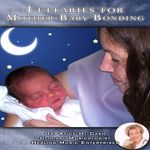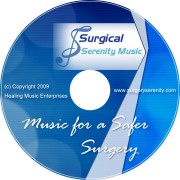A version of this article appeared in print on June 1, 2010, on page D2 of the New York edition.
Q. YOU DESCRIBE YOURSELF AS A NEUROSCIENTIST OF MUSIC. THIS HAS TO BE A NEW PROFESSION. HOW DID YOU COME TO IT?
A. I’ve been passionate about two things since childhood — science and music. At graduate school, Harvard, I hoped to combine the two.
But studying with E.O. Wilson, I quite naturally got caught up with ants. In 1990, I found myself in Australia doing fieldwork on ants for a Ph.D. thesis. And there, I had this epiphany: the only thing I really wanted to do was study the biology of how humans make and process music.
I wondered if the drive to make it was innate, a product of our evolution, as Darwin had speculated. Did we have a special neurobiological capacity for music, as we do for language and grammar? So from Australia, I wrote Wilson that there was no way I could continue with ants. Amazingly, he wrote: “You must follow your passion. Come back to Harvard, and we’ll give it a shot.”
Wilson and Evan Balaban, a birdsong biologist who taught me about the neurobiology of auditory communication, mentored me through my thesis, which was called “A Biological Study of the Relationship Between Language and Music.” When I defended it in 1996, this was unusual scholarship. The neurobiology of music wasn’t yet a recognized field.
Q. WHEN DID IT GO MAINSTREAM?
A. Not too long after that. By the late 1990s, all of neuroscience was being transformed by the widespread use of imaging technologies.
Because it became possible to learn how the brain was affected when people engaged in certain activities, it became acceptable to study things previously considered fringy. Today you have the neuroscience of economics, of music, of everything.
I published a paper in 1998 that really surprised people. It was the first imaging study showing what happens when the brain processes musical grammar as compared with what happens when it processes language. From what we learned, this was occurring in an overlapping way within the brain. And this was a clue that the neurobiology of music could give us a new path to access and perhaps even heal some language disabilities.
Q. HOW WOULD THAT WORK?
A. One example. There’s a neurologist in Boston, Gottfried Schlaug, who uses music therapy to return some language to stroke victims. He has them learn simple phrases by singing them. This has proved more effective than having them repeat spoken phrases, the traditional therapy. Schlaug’s work suggests that when the language part of the brain has been damaged, you can sometimes recruit the part that processes music to take over.
Music neuroscience is also helping us understand Alzheimer’s. There are Alzheimer’s patients who cannot remember their spouse. But they can remember every word of a song they learned as a kid. By studying this, we’re learning about how memory works.
Q. RECENTLY, YOU’VE BEEN WORKING WITH A SULFUR-CRESTED COCKATOO NAMED SNOWBALL. WHAT PROMPTED THE COLLABORATION?
A. Before I encountered Snowball, I wondered whether human music had been shaped for our brains by evolution — meaning, it helped us survive at some point. Well, in 2008, a colleague asked me to view a YouTube video of a cockatoo who appeared to be dancing to the beat of “Everybody” by the Backstreet Boys!
My jaw hit the floor. If you saw a video of a dog reading a newspaper out loud, you’d be pretty impressed, right? To people in the music community, a cockatoo dancing to a beat was like that. This was supposed to be, some said, a uniquely human behavior! If this was real, it meant that the bird might have circuits in its brain for processing beat similar to ours.
Q. WHAT DID YOU DO WITH THIS INSIGHT?
A. I phoned up the bird shelter in Indiana where Snowball lived and talked to the director who told me his story. A man had dropped him off with a CD and the comment, “Snowball likes to dance to this.” One day, Irena Schulz, the proprietor, played “Everybody” to amuse the abandoned creature. And Snowball began to move. Irena then made the YouTube video, which immediately went viral. Millions saw it.
“Let’s design an experiment to see if this is real,” I proposed to Irena, who had a science background herself. We took the Backstreet Boys song, sped it up and slowed it down at 11 different tempos, then videoed what Snowball did to each. For 9 out of the 11 variations, the bird moved to the beat, which meant that he’d processed the music in his brain and his muscles had responded. So now we had the first documented case of a nonhuman animal who, without training, could sense a beat out of music and move to it.
Q. YOU SAY THAT SNOWBALL CHANGED YOUR THINKING. HOW?
A. Before Snowball, I wondered if moving to a musical beat was uniquely human. Snowball doesn’t need to dance to survive, and yet, he did. Perhaps, this was true of humans, too?
Since working with Snowball, I’ve come to think we could learn more music neuroscience by studying the behaviors of not just parrots, but perhaps dolphins, seals, songbirds — also vocal learners.
We eventually published the Snowball research in Current Biology. A group at Harvard published a paper right alongside ours in which they surveyed thousands of YouTube videos to see if there were other animals spontaneously moving to a beat. They found about 12 or 13 parrots. No dogs. No cats. No horses.
What do humans have in common with parrots? Both species are vocal learners, with the ability to imitate sounds. We share that rare skill with parrots. In that one respect, our brains are more like those of parrots than chimpanzees. Since vocal learning creates links between the hearing and movement centers of the brain, I hypothesized that this is what you need to be able to move to beat of music.
Q. IS IT DIFFICULT TO FIND MONEY FOR THIS TYPE OF RESEARCH?
A. It easier than it used to be. One of the founders of this field, Dr. Robert Zatorre, before 2000, he never used the word music in a grant application. He knew it would get turned down automatically because people thought this was not scientific. Instead, he used terms like “complex nonlinguistic auditory processing.”
But in recent years, it’s become O.K. to say: I study music and the brain.








No Comments so far ↓
There are no comments yet...Kick things off by filling out the form below.